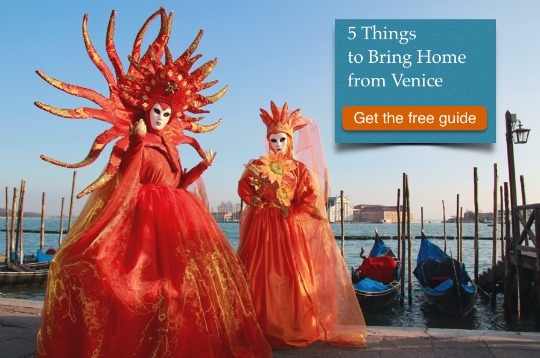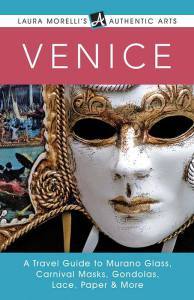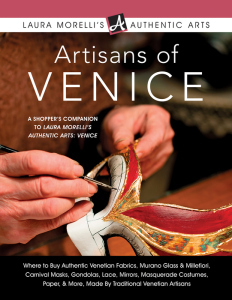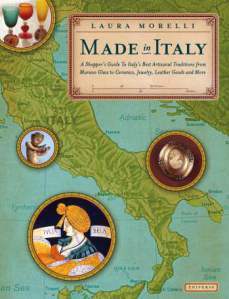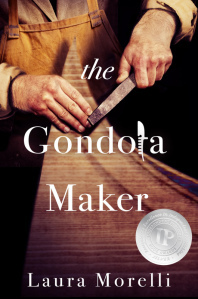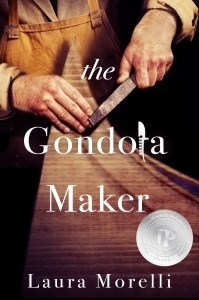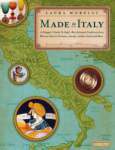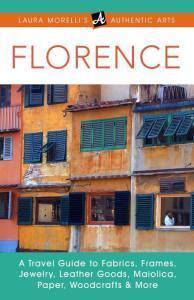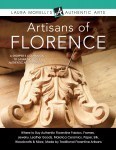Laura Morelli's Blog, page 5
September 15, 2015
Native American Symbols & Sites

Admiring Native American symbols and sites, including ancient petroglyphs and pottery shards on the Hopi reservation
The American Southwest is one of my favorite places (I even wrote a book about it…), and I was thrilled to be able to spend some of the summer in Arizona this year. One of my dreams was to bring my children to the Navajo and Hopi reservations in northeastern Arizona and southern Utah.

Look at all the ancient pottery shards!
As Americans, I feel it’s important for all of us to understand how Native American peoples lived in the past (even in the relatively recent past), and also how they live today. We were humbled and privileged to be able to visit several homes and villages of these generous people, and to truly understand how they reconcile the past and present in their daily lives.

Our Hopi guide interpreting the meaning of these incredible ancient symbols
If you haven’t visited the reservations, GO. It is a wonderful way to enjoy some of the most striking and beautiful landscapes of North America, and to come face-to-face with native artists preserving the traditions of their ancestors.

Getting ready for bed inside a traditional Navajo hogan
Have you gone off the beaten path in the American Southwest? Drop a comment below. I love to hear your stories!
Be the first to receive exclusive content, news, contests, and reader appreciation gifts. Sign up for my Reader’s Group and download a free copy of my guide, How to Go Shopping on Vacation Without Getting Ripped Off.#wrapper .fusion-button.button-1{text-shadow:none;-webkit-box-shadow:none;-moz-box-shadow:none;box-shadow: none;border-width:0px;color:#ffffff;border-color:#ffffff;}#wrapper .fusion-button.button-1:hover,.fusion-button.button-1:focus,.fusion-button.button-1:active{border-width:0px;border-color:#000000;color:#000000;}#wrapper .fusion-button.button-1{background: #dd9933;
background-image: -webkit-gradient( linear, left bottom, left top, from( #c97800 ), to( #dd9933 ) );
background-image: -webkit-linear-gradient( bottom, #c97800, #dd9933 );
background-image: -moz-linear-gradient( bottom, #c97800, #dd9933 );
background-image: -o-linear-gradient( bottom, #c97800, #dd9933 );
background-image: linear-gradient( to top, #c97800, #dd9933 );}#wrapper .fusion-button.button-1:hover,.button-1:focus,.fusion-button.button-1:active{background: #c97800;
background-image: -webkit-gradient( linear, left bottom, left top, from( #dd9933 ), to( #c97800 ) );
background-image: -webkit-linear-gradient( bottom, #dd9933, #c97800 );
background-image: -moz-linear-gradient( bottom, #dd9933, #c97800 );
background-image: -o-linear-gradient( bottom, #dd9933, #c97800 );
background-image: linear-gradient( to top, #dd9933, #c97800 );}GET MY FREE BOOK
Explore my books:
.imageframe-2 img{border:1px solid #bfbfbf;} 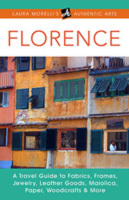 .imageframe-3 img{border:1px solid #bfbfbf;}
.imageframe-3 img{border:1px solid #bfbfbf;} 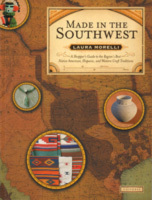 .imageframe-4 img{border:1px solid #bfbfbf;}
.imageframe-4 img{border:1px solid #bfbfbf;} 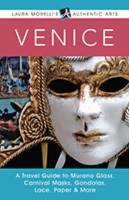 .imageframe-5 img{border:1px solid #bfbfbf;}
.imageframe-5 img{border:1px solid #bfbfbf;} 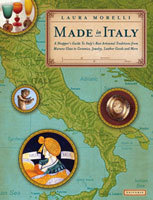
Learn more about Laura Morelli’s Authentic Arts guidebook series.
The post Native American Symbols & Sites appeared first on Laura Morelli: Art History, Art Historical Fiction, Authentic Travel.
August 15, 2015
Venice: Our Lady of the Ferry Station
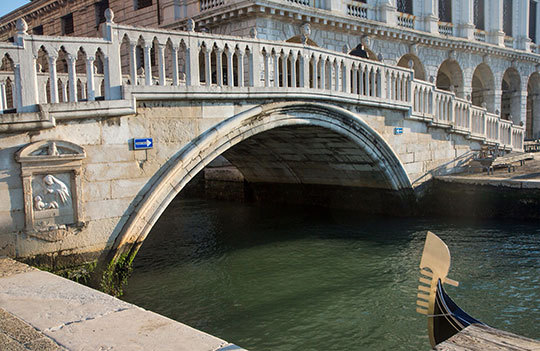
Some of the most fascinating and authentic finds in Venice appear in unexpected places—on the side of a church altar, in a street-corner shrine, on a sign in the alleyway. Don’t miss these fun opportunities to immerse yourself in Venetian artisanal history. Here’s one of my favorites:
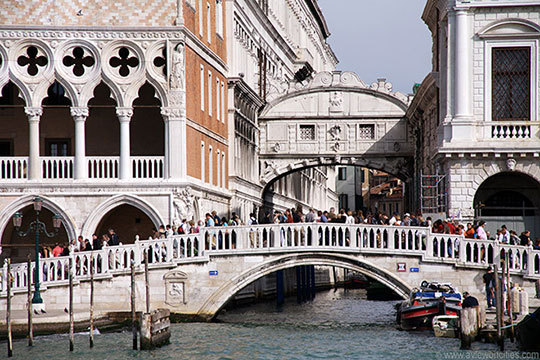
A hidden sixteenth-century shrine to the Madonna and Child is carved into the side of the Ponte della Paglia. That’s the bridge where tourists stand to take a picture of the more famous Bridge of Sighs near the Piazza San Marco. Most people miss what lies below them.

The shrine to the Madonna and Child is carved in high relief into one of the spandrels of the bridge so that it is visible to gondoliers as they glide underneath the bridge’s arch. Below the image of the Madonna and Child are two carved gondolas with passenger compartments (felzi). This area was once the spot of one of the city’s many traghetti (ferry stations), the Renaissance equivalent of a taxi stand.
Have you discovered a “secret” in Venice? Drop a comment below. I love to hear your stories!
Be the first to receive exclusive content, news, contests, and reader appreciation gifts. Sign up for my Reader’s Group and download a free copy of my guide, How to Go Shopping on Vacation Without Getting Ripped Off.#wrapper .fusion-button.button-1{text-shadow:none;-webkit-box-shadow:none;-moz-box-shadow:none;box-shadow: none;border-width:0px;color:#ffffff;border-color:#ffffff;}#wrapper .fusion-button.button-1:hover,.fusion-button.button-1:focus,.fusion-button.button-1:active{border-width:0px;border-color:#000000;color:#000000;}#wrapper .fusion-button.button-1{background: #dd9933;
background-image: -webkit-gradient( linear, left bottom, left top, from( #c97800 ), to( #dd9933 ) );
background-image: -webkit-linear-gradient( bottom, #c97800, #dd9933 );
background-image: -moz-linear-gradient( bottom, #c97800, #dd9933 );
background-image: -o-linear-gradient( bottom, #c97800, #dd9933 );
background-image: linear-gradient( to top, #c97800, #dd9933 );}#wrapper .fusion-button.button-1:hover,.button-1:focus,.fusion-button.button-1:active{background: #c97800;
background-image: -webkit-gradient( linear, left bottom, left top, from( #dd9933 ), to( #c97800 ) );
background-image: -webkit-linear-gradient( bottom, #dd9933, #c97800 );
background-image: -moz-linear-gradient( bottom, #dd9933, #c97800 );
background-image: -o-linear-gradient( bottom, #dd9933, #c97800 );
background-image: linear-gradient( to top, #dd9933, #c97800 );}GET MY FREE BOOK
Explore my books:
.imageframe-2 img{border:1px solid #bfbfbf;}  .imageframe-3 img{border:1px solid #bfbfbf;}
.imageframe-3 img{border:1px solid #bfbfbf;} 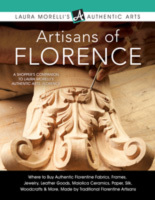 .imageframe-4 img{border:1px solid #bfbfbf;}
.imageframe-4 img{border:1px solid #bfbfbf;}  .imageframe-5 img{border:1px solid #bfbfbf;}
.imageframe-5 img{border:1px solid #bfbfbf;} 
Learn more about Laura Morelli’s Authentic Arts guidebook series.
The post Venice: Our Lady of the Ferry Station appeared first on Laura Morelli: Art History, Art Historical Fiction, Authentic Travel.
July 13, 2015
What’s in my book signing bag?

Thanks to Hannah Williams of @happystrangers (who I met serendipitously at a book club event just as I needed someone to take a picture) for taking this beautiful photograph!
Here’s what’s in my bag:
-A gorgeous ball-point pen, a gift from one of my husband’s Japanese business colleagues. It’s hefty, has beautiful woodgrain and—best of all—bears a magnetic cap that makes it oh-so-clickable
-A stack of business cards and another set of cards with information about one or more of my books
-A small pad of personalized notecards and sticky notes for jotting down notes or sharing tidbits of information
-A nice cover for my iPad (I leave my worn-out cover at home) and some screen wipes
-My Square Reader, which allows people to pay for extra books with their credit or debit card. (Some folks rarely carry a checkbook or even cash, but most of us have our plastic handy!)
-A few extra copies of my books, just in case
Fellow authors, do you have a “book signing bag,” and if so, what’s in it? Drop a comment below. I love to hear your stories!
Be the first to receive exclusive content, news, contests, and reader appreciation gifts.
Sign up for my Reader’s Group and download a free copy of my guide, How to Go Shopping on Vacation Without Getting Ripped Off.#wrapper .fusion-button.button-1{text-shadow:none;-webkit-box-shadow:none;-moz-box-shadow:none;box-shadow: none;border-width:0px;color:#ffffff;border-color:#ffffff;}#wrapper .fusion-button.button-1:hover,.fusion-button.button-1:focus,.fusion-button.button-1:active{border-width:0px;border-color:#000000;color:#000000;}#wrapper .fusion-button.button-1{background: #dd9933;
background-image: -webkit-gradient( linear, left bottom, left top, from( #c97800 ), to( #dd9933 ) );
background-image: -webkit-linear-gradient( bottom, #c97800, #dd9933 );
background-image: -moz-linear-gradient( bottom, #c97800, #dd9933 );
background-image: -o-linear-gradient( bottom, #c97800, #dd9933 );
background-image: linear-gradient( to top, #c97800, #dd9933 );}#wrapper .fusion-button.button-1:hover,.button-1:focus,.fusion-button.button-1:active{background: #c97800;
background-image: -webkit-gradient( linear, left bottom, left top, from( #dd9933 ), to( #c97800 ) );
background-image: -webkit-linear-gradient( bottom, #dd9933, #c97800 );
background-image: -moz-linear-gradient( bottom, #dd9933, #c97800 );
background-image: -o-linear-gradient( bottom, #dd9933, #c97800 );
background-image: linear-gradient( to top, #dd9933, #c97800 );}GET MY FREE BOOK
Explore my books:
.imageframe-2 img{border:1px solid #bfbfbf;}  .imageframe-3 img{border:1px solid #bfbfbf;}
.imageframe-3 img{border:1px solid #bfbfbf;} 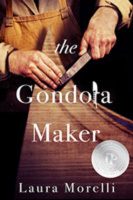 .imageframe-4 img{border:1px solid #bfbfbf;}
.imageframe-4 img{border:1px solid #bfbfbf;}  .imageframe-5 img{border:1px solid #bfbfbf;}
.imageframe-5 img{border:1px solid #bfbfbf;} 
Learn more about Laura Morelli’s Authentic Arts guidebook series.
The post What’s in my book signing bag? appeared first on Laura Morelli: Art History, Art Historical Fiction, Authentic Travel.
July 11, 2015
What’s in my book signing bag?

Thanks to Hannah Williams of @happystrangers (who I met serendipitously at a book club event just as I needed someone to take a picture) for taking this beautiful photograph!
Here’s what’s in my bag:
-A gorgeous ball-point pen, a gift from one of my husband’s Japanese business colleagues. It’s hefty, has beautiful woodgrain and—best of all—bears a magnetic cap that makes it oh-so-clickable
-A stack of business cards and another set of cards with information about one or more of my books
-A small pad of personalized notecards and sticky notes for jotting down notes or sharing tidbits of information
-A nice cover for my iPad (I leave my worn-out cover at home) and some screen wipes
-My Square Reader, which allows people to pay for extra books with their credit card. (I rarely have my checkbook or cash, but I always carry my credit or debit card!)
-A few extra copies of my books, just in case
Fellow authors, do you have a “book signing bag,” and if so, what’s in it? Drop a comment below. I love to hear your stories!
Be the first to receive exclusive content, news, contests, and reader appreciation gifts. Sign up for my Reader’s Group and download a free copy of my guide, How to Go Shopping on Vacation Without Getting Ripped Off.#wrapper .fusion-button.button-1{text-shadow:none;-webkit-box-shadow:none;-moz-box-shadow:none;box-shadow: none;border-width:0px;color:#ffffff;border-color:#ffffff;}#wrapper .fusion-button.button-1:hover,.fusion-button.button-1:focus,.fusion-button.button-1:active{border-width:0px;border-color:#000000;color:#000000;}#wrapper .fusion-button.button-1{background: #dd9933;
background-image: -webkit-gradient( linear, left bottom, left top, from( #c97800 ), to( #dd9933 ) );
background-image: -webkit-linear-gradient( bottom, #c97800, #dd9933 );
background-image: -moz-linear-gradient( bottom, #c97800, #dd9933 );
background-image: -o-linear-gradient( bottom, #c97800, #dd9933 );
background-image: linear-gradient( to top, #c97800, #dd9933 );}#wrapper .fusion-button.button-1:hover,.button-1:focus,.fusion-button.button-1:active{background: #c97800;
background-image: -webkit-gradient( linear, left bottom, left top, from( #dd9933 ), to( #c97800 ) );
background-image: -webkit-linear-gradient( bottom, #dd9933, #c97800 );
background-image: -moz-linear-gradient( bottom, #dd9933, #c97800 );
background-image: -o-linear-gradient( bottom, #dd9933, #c97800 );
background-image: linear-gradient( to top, #dd9933, #c97800 );}GET MY FREE BOOK
Explore my books:
.imageframe-2 img{border:1px solid #bfbfbf;}  .imageframe-3 img{border:1px solid #bfbfbf;}
.imageframe-3 img{border:1px solid #bfbfbf;}  .imageframe-4 img{border:1px solid #bfbfbf;}
.imageframe-4 img{border:1px solid #bfbfbf;}  .imageframe-5 img{border:1px solid #bfbfbf;}
.imageframe-5 img{border:1px solid #bfbfbf;} 
Learn more about Laura Morelli’s Authentic Arts guidebook series.
The post What’s in my book signing bag? appeared first on Laura Morelli: Art History, Art Historical Fiction, Authentic Travel.
June 18, 2015
Burano Lace: A Brief History
In 1880, twenty-four of the thirty inpatients at the women-only San Clemente “lunatic asylum” in Venice were listed on the books as lacemakers. Whether a coincidence or a measure of the long-lasting effects of such tedious work, one thing is certain: creating traditional Venetian lace is one of the most painstaking endeavors in the history of art.
The origins of Venetian lace are lost to history. According to legend, a love-struck sailor gave a Venetian girl an aquatic plant called trina delle sirene—mermaid’s lace. The girl was so taken with it that she immortalized its beautiful form with fine threads, and the art of lacemaking was born. Over several centuries, Venetian lacemakers produced wonders of breathtaking intricacy, extremely fine pieces stitched together with gossamer-fine threads. For three hundred years their work boasted the most prestigious lace pedigree in Italy, if not in the world.

Marie de Medici wearing a Burano lace ruff. Portrait by Frans Pourbus, Louvre, Paris
The earliest Venetian laces were produced inside convents and were reserved for church vestments, altar cloths, and other delicate church finery. Trade guilds also began to craft lace in the fifteenth and sixteenth centuries, although in Venice—as in other important lace cities in northern France and Flanders—the convents continued to be prolific centers of lace production. Because lace was considered a proper task for a woman, especially one dedicated to contemplative life, many cloistered women spent most of their daylight hours—indeed most of their lives—with a needle and thread. Lacemaking also became the province of the various scuole, or Venetian civic organizations, which, among other charitable activities, organized work for victims of circumstance, including spinsters, orphans, and others who could not find a clear place within the strict social roles of Venetian society.
The heyday of Venetian needle lace ranged from about 1620 to 1710, the height of demand among European nobility and royalty. Venetian lace became known as punto in aria or “points in the air” because of its delicate effects. At that time, fashion called for lace collars and cuffs, as well as handkerchiefs and other accessories for both men and women. A type of lace collar that spread out in a fan behind a woman’s head became popular in Venice itself.
Venetian lace gained such fame that it became a status symbol for European nobles. Portraits of nobles wearing outlandishly fancy lace collars—the kinds you see in the seventeenth-century paintings of Rembrandt and van Dyck—helped make Venetian lace a status symbol among aristocracy from Ghent to Paris. European nobles wore their Venetian lace finery to sit for portraits that would be handed down to future generations. Painters were challenged to capture the web-like intricacies of lace in paint, portraying their sitters’ collars, cuffs, shawls, veils, and gloves.
Venetian lace is well documented among the most prized possessions of European nobles. In the 1600s, an inventory of the wardrobe of Elizabeth I of England included lace of “Venice sylver” and “Venys gold,” a testament to the practice of weaving braids of precious metals into lace patterns for costly fine garments. Punto in aria is also well documented throughout the Renaissance as part of women’s dowry inventories, a testament to its enduring value.
In order to supply the increasing demand for Venetian lace, cloth merchants moved lace production to the outlying lagoon islands in order to employ lacemakers at low cost. Soon, lace produced on the island of Burano became the most highly coveted lace in Europe. The women began working in almost an assembly-line fashion, churning out trimmings and finery to supply the clothiers’ guild. Although the lacemakers themselves never became wealthy, those involved in the international trade of lace and textiles could soon afford to occupy the finest palaces of Venice.
Catherine de Medici, an Italian noblewoman who became Queen of France, brought Venetian lace designers to the French court in the mid-1500s, and punto in aria remained popular in France for another two centuries. King Louis XIV looked to Venetian artists rather than French ones when it came time for his coronation in 1654. For the event, he wore a fine lace collar that took lacemakers Lucretia and Vittoria Torre from the hospice of the Zitelle on Giudecca some two years to produce. The commission created renewed demand among French patrons, and in 1665, Jean-Baptiste Colbert, the French Minister of Finance, brought a group of Venetian lacemakers to train women in the French lacemaking centers of Reims and Alençon.
Eventually, the rise of French and Flemish centers of production signaled the end of an era for Venetian lace. By the end of the seventeenth century, stiff competition with these northern rivals caused the Venetian lace industry to decline, even though Burano lacemakers attempted to evolve along with fashions. French needle lace, point de France, rose in popularity, and Venetian lacemakers began to borrow French motifs. When collars made with Flemish bobbin lace became all the rage in the eighteenth century, Venetian lacemakers emulated it with the needle and thread, resulting in a new type of lace that came to be known as punto Burano.
As Venetian lace began to fall from favor, there were attempts to found a lacemaking school on Burano to revive what was already seen as a waning tradition. However, by the end of the eighteenth century, in the wake of the French and American Revolutions, people no longer wanted to wear fashions that were associated with the reviled aristocracy.
On Burano, however, lacemaking never truly died, as mothers continued to pass on the tradition and the skill to their daughters and granddaughters. The art of Venetian lacemaking ceased large-scale production and returned to its origins as a private, domestic occupation. Many women turned to bobbin lace, a faster and therefore more economical technique for turning out edgings for table linens and other accessories.
Venetian lace enjoyed a revival toward the end of the 1800s, thanks in part to the politician Paolo Fambri, who gathered the right group of people and resources to bolster Burano’s sagging economy and bring the tradition of lace to life again. A small group of supporters rallied around a vision to revive the tradition of Venetian needle lace, as well as other bobbin lace traditions once practiced widely in the Veneto region, particularly in Pellestrina and Chioggia. At that time, a single elderly, illiterate woman named Cencia Scarpariola remembered how to execute the centuries-old punto in aria di Burano stitch, which she passed on to several other women.
In 1872, the Scuola di Merletti, or lace school, opened thanks to the patronage of Countess Adriana Marcello, Princess Margherita of Savoy, and several other noblewomen who agreed to purchase the work produced by the school. Fambri also brought together several companies to begin producing and selling traditional lace. One of these companies belonged to a Venetian entrepreneur named Michelangelo Jesurum. Mr. Jesurum opened a lacemaking factory, which helped to pass the torch of tradition. In 1939, the business was sold to the Levi Morenos family, who continues to operate the enterprise under the name Jesurum today.
Many of the women you see on Burano today making lace in the squares and on the sidewalks learned the craft from childhood, either from their mothers or grandmothers, or from the old lacemaking school. The craft continues thanks to today’s lively Venetian tourist trade, which still supplies buyers for this longstanding art form.
You might enjoy:
The post Burano Lace: A Brief History appeared first on Laura Morelli: Art History, Art Historical Fiction, Authentic Travel.
May 22, 2015
Made in Italy: A New Partnership
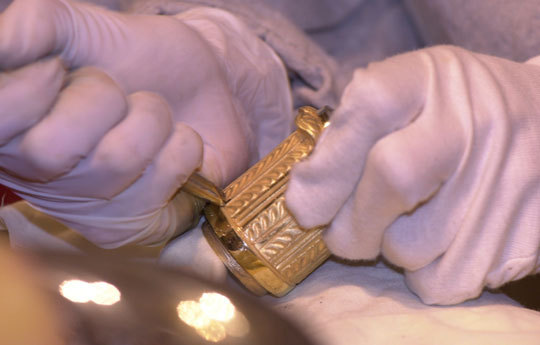
I’m excited to announce a new partnership with MANIMENTI, a Rome-based startup that is bringing the best of “Made in Italy” to the web.
What is Manimenti?
MANIMENTI is a curated website bringing the world’s best artisans and historic workshops online at www.manimenti.com. In addition to arranging custom requests, restorations, and architectural services, Manimenti curates online selling exhibitions dedicated to each of its 40+ accredited master artisans on a rolling basis. They offer people around the world the opportunity to become today’s de Medici, art patrons of the online generation, with access to handcrafted contemporary artifacts and skills of world heritage.
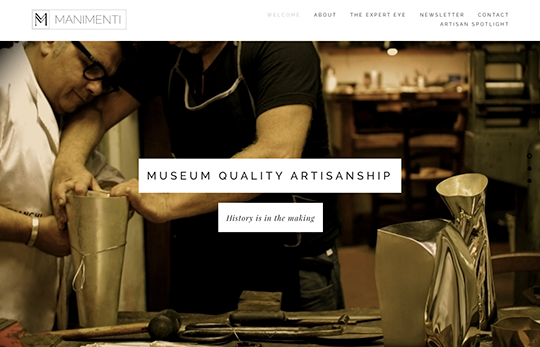
Each heirloom object–exquisite violins, hand carved frames, marble inlay tables–is individually assessed for quality and aesthetics by Claire Serpi, Manimenti’s CEO and a Sotheby’s trained art expert. Only the most representative artisans are invited to participate. Restorers, for example, have worked on monuments in UNESCO sites of world heritage including the Trevi Fountain and St. Peter’s Basilica.
Made in Italy: Artisans and Authenticity
“MANIMENTI is the realization of an idea that began when I first moved to Italy,” shares CEO and co-founder Serpi. “What captured my sense of wonder weren’t just masterpieces by Caravaggio or skeletons of grand architecture, but the ubiquitous attention to artistic detail: flourishes in unexpected places like doorknobs and water fountains, street lamps and window grates. These meticulous labors of passion, articulated with originality and skill, spoke to my heart.”
I’ll be writing monthly pieces for MANIMENTI’s blog and online newsletter. You can read more of my work for Manimenti here:
Have you discovered something handmade and wonderful in your travels to Italy? Drop a comment below. I love to hear your stories!
Click here to download a free copy of my guide, How to Go Shopping on Vacation Without Getting Ripped Off.#wrapper .fusion-button.button-4{text-shadow:none;-webkit-box-shadow:none;-moz-box-shadow:none;box-shadow: none;border-width:0px;color:#ffffff;border-color:#ffffff;}#wrapper .fusion-button.button-4:hover,.fusion-button.button-4:focus,.fusion-button.button-4:active{border-width:0px;border-color:#000000;color:#000000;}#wrapper .fusion-button.button-4{background: #dd9933;
background-image: -webkit-gradient( linear, left bottom, left top, from( #c97800 ), to( #dd9933 ) );
background-image: -webkit-linear-gradient( bottom, #c97800, #dd9933 );
background-image: -moz-linear-gradient( bottom, #c97800, #dd9933 );
background-image: -o-linear-gradient( bottom, #c97800, #dd9933 );
background-image: linear-gradient( to top, #c97800, #dd9933 );}#wrapper .fusion-button.button-4:hover,.button-4:focus,.fusion-button.button-4:active{background: #c97800;
background-image: -webkit-gradient( linear, left bottom, left top, from( #dd9933 ), to( #c97800 ) );
background-image: -webkit-linear-gradient( bottom, #dd9933, #c97800 );
background-image: -moz-linear-gradient( bottom, #dd9933, #c97800 );
background-image: -o-linear-gradient( bottom, #dd9933, #c97800 );
background-image: linear-gradient( to top, #dd9933, #c97800 );}GET MY FREE BOOK
Explore my books:
.imageframe-17 img{border:1px solid #bfbfbf;}  .imageframe-18 img{border:1px solid #bfbfbf;}
.imageframe-18 img{border:1px solid #bfbfbf;}  .imageframe-19 img{border:1px solid #bfbfbf;}
.imageframe-19 img{border:1px solid #bfbfbf;}  .imageframe-20 img{border:1px solid #bfbfbf;}
.imageframe-20 img{border:1px solid #bfbfbf;} 
Learn more about Laura Morelli’s Authentic Arts guidebook series.
The post Made in Italy: A New Partnership appeared first on Laura Morelli: Art History, Art Historical Fiction, Authentic Travel.
A New Partnership Supporting Italy’s Best Artisans

I’m excited to announce a new partnership with MANIMENTI, a Rome-based startup that is bringing some of Italy’s best artisans to the web.
MANIMENTI is a curated website bringing the world’s best artisans and historic workshops online at www.manimenti.com. In addition to arranging custom requests, restorations, and architectural services, Manimenti curates online selling exhibitions dedicated to each of its 40+ accredited master artisans on a rolling basis. They offer people around the world the opportunity to become today’s de Medici, art patrons of the online generation, with access to handcrafted contemporary artifacts and skills of world heritage.

Each heirloom object–exquisite violins, hand carved frames, marble inlay tables–is individually assessed for quality and aesthetics by Claire Serpi, Manimenti’s CEO and a Sotheby’s trained art expert. Only the most representative artisans are invited to participate. Restorers, for example, have worked on monuments in UNESCO sites of world heritage including the Trevi Fountain and St. Peter’s Basilica.
“MANIMENTI is the realization of an idea that began when I first moved to Italy,” shares CEO and co-founder Serpi. “What captured my sense of wonder weren’t just masterpieces by Caravaggio or skeletons of grand architecture, but the ubiquitous attention to artistic detail: flourishes in unexpected places like doorknobs and water fountains, street lamps and window grates. These meticulous labors of passion, articulated with originality and skill, spoke to my heart.”
I’ll be writing monthly pieces for MANIMENTI’s blog and online newsletter. You can read more of my work for Manimenti here:
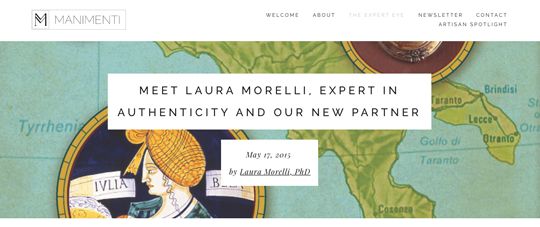
And, if you’re in Rome this weekend, head to the Palazzo Pasolini dall’Onda, Piazza Cairoli 6, to see Manimenti’s inaugural collection of jewelry handmade by the papal gold and silversmith Claudio Franchi, on display at the Historic Italian Palaces Association’s “Open Courtyards & Artisans” event open to the public May 23-24, 2015, 10:00-19:00.
The post A New Partnership Supporting Italy’s Best Artisans appeared first on Laura Morelli: Art History, Art Historical Fiction, Authentic Travel.
May 5, 2015
Enjoying Coastal Georgia with Frances Mayes

Earlier this week I took a trip “back home” to coastal Georgia. I can’t stay away for long, or I become homesick for the humid, salt-tinged air; the bright quality of the sunlight; the evening songs of the marsh frogs; the moss-laden branches; and the soft, black earth under my toes. I crave it, I need it, I am lured home again and again.
One of the highlights of this trip was a chance–finally–to meet author Frances Mayes, author of Under the Tuscan Sun and other books, in person. Frances and I share roots in south Georgia, as well as an intense love for Italy and other locales with a strong sense of place.
Frances and I have corresponded over time, and in spite of her busy schedule, she was kind enough to take the time to read my book, The Gondola Maker, and write a few lines about it:
“I’m a big fan of Venice, so I appreciate Laura Morelli’s special knowledge of the city, the period, and the process of gondola-making. An especially compelling story.”
—Frances Mayes
It was a pleasure to get the chance to sit outside on a lovely south Georgia evening and chat with Frances over a glass of wine. I loved hearing her speak of her Georgia childhood and her life in Italy with her soft southern accent.

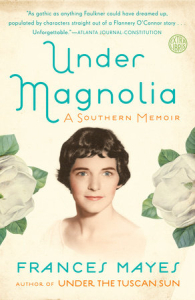 I went home with a copy of Frances’s new book, Under Magnolia: A Southern Memoir
I went home with a copy of Frances’s new book, Under Magnolia: A Southern Memoir , and I’m nearly finished with it even though I have slowed down the pace of my reading in order to make the story last. Her descriptions and impressionistic memories of growing up in Georgia are so beautifully rendered. It is simply a wonderful book and I am not ready for it to end… Pick up a copy!
, and I’m nearly finished with it even though I have slowed down the pace of my reading in order to make the story last. Her descriptions and impressionistic memories of growing up in Georgia are so beautifully rendered. It is simply a wonderful book and I am not ready for it to end… Pick up a copy!
Tell me… Have you read any of Frances Mayes’s work? Comment below!

Click here to download your free guide, How to Go Shopping on Vacation Without Getting Ripped Off:
Click here to learn more about my books:
The post Enjoying Coastal Georgia with Frances Mayes appeared first on Laura Morelli: Art History, Art Historical Fiction, Authentic Travel.
April 22, 2015
Murano Glass: A Brief History
The cluster of islands known as Murano emerges from the Venetian lagoon, a vast expanse of water whose surface reflects every shift in light. Since the thirteenth century, glassmakers have observed these shimmering waters outside their workshops, a vision reflected in the art that has made Murano, and its glass masters, world-famous.
Glass vessels dating from the Roman era have been excavated across the Veneto. Some of these glass works incorporate classic techniques, such as murrina that we now associate with Murano glass, and they look remarkably consistent with glass produced in Venice even today. Fioleri (glass-, or more specifically, bottle-makers) are noted in Venetian documents as far back as the tenth century, and their name gives an idea of the utilitarian nature of the wares they probably produced at that time: tableware, window glass, and other household items. During the Middle Ages the art of glassmaking must have also been closely linked with mosaic, which was widely used across the city. Venetian mosaicists regularly used glass tesserae, or pieces, in creating the mosaics that decorated the floors, walls, and vaults of many of the city’s churches. By the 1220s, glassmakers were organized into guilds operating under a strict set of statutes that governed not only their working conditions but also many other aspects of the glassmakers’ lives.
Glassblowers came to be located on Murano for two reasons. The first was to minimize fire risk in Venice. The great number of glass-firing ovens—which regularly reached some 1500 degrees Celsius—produced beautiful glass objects but also initiated fires in the city. The fire hazard must have become onerous because by the 1270s, city officials had begun to transfer glass workshops from the center of Venice to Murano, a process completed by 1291. The second reason to relocate glassmakers to Murano was probably political. Trade secrets of Murano glassmaking were already being leaked across Europe during the Middle Ages, and sequestering glassmakers on Murano allowed the Republic to control glass production and exportation, ensuring that these secrets remained in Venice. Glassmakers faced steep fines or even imprisonment if they traveled outside the Republic, though interestingly, glassmakers from Dalmatia, Bohemia, and elsewhere were occasionally authorized to work on Murano. Until the sixteenth century, Murano glassmakers held a monopoly on European glassmaking, and their stunning creations brought them renown across the world.
We know something about early Venetian glassmaking techniques thanks to a work called L’Arte Vetraria (“glass art”), written by Antonio Neri in 1612. Neri’s work outlines the most valued types of Murano glass at that time, noting that it was the delicacy, lightness, and translucency of Murano glass that brought it fame.
Although the majority of Venetian glassmakers named in historical documents were men, some female glassmakers’ names appeared as early as the 1500s, especially in connection with beadmaking, whose practitioners formed their own separate guild. Many thousands of these beads made their way to Africa and North America, where they were used as currency and as embellishment for clothing well into the modern era. Even today early Venetian “trade beads” can be found on objects as disparate as a Native American purse or an African headdress.
The glassmaking trade faced hardships toward the end of the 1600s, when economic difficulties and plague outbreaks hit Venice particularly hard. Murano glassworkers also lost their monopoly on the exportation of certain types of glass and mirrors to the French royal manufactures, and other European glassmaking centers rose to prominence. The Venetian guilds were officially dismantled in the first few years of the 1800s, but just a few decades later there was already renewed interest in Murano glass. The mid-1800s saw an invigoration of Murano glass traditions with the foundation of several new firms, including Fratelli Barovier and Fratelli Toso, today Barovier & Toso. Murano glass enjoys a healthy trade today thanks in part to the tourist market and high demand among collectors for special pieces.
Even with the great variety of Murano glass techniques and its long history, there is something cohesive in the visual vocabulary of Murano glass. Even ancient pieces of glass discovered in the Veneto show that the region’s glassblowing techniques have remained consistent since ancient times. Some centuries-old museum pieces look remarkably contemporary, with the colorful stripes and swirls we still associate with Murano.
Today, the island of Murano is synonymous with glass. Everything imaginable is made from Murano glass: wine goblets, vases, candlestick holders, miniature animals, paperweights, chandeliers, lampshades, dinner services, tiny pieces of glass candy, beads, and every kind of jewelry you can imagine. There is tremendous variety in quality, price, and style. When it’s quickly turned out for a cheap profit among the tourist trade, frankly it can look hideous. When it’s well done, it takes your breath away.
The post Murano Glass: A Brief History appeared first on Laura Morelli: Art History, Art Historical Fiction, Authentic Travel.
April 14, 2015
The Craft Traditions of Florence, Italy
The craft traditions of Florence are deeply embedded in the city’s history, arguably more so than in any city in the world. From the twelfth century onward, the Florentine craft guilds, the Corporazioni di Arti e Mestieri, dominated the city’s economic and social organization.
The seven major guilds (arti maggiori), five middle guilds (arti mediane) and nine minor guilds (arti minori) organized the lives of all craftspeople, from painters to sculptors, furriers to cobblers, and makers of everything from hats to belts, keys, bracelets, goblets, rugs, lamps, spoons, shoes, and stockings. Each maker had a role to play in Florentine society, and each contributed to the city’s culture of high technical skill, reputation for quality, and economic might.
By the late Middle Ages, every neighborhood of Florence pulsed with the lifeblood of these trades. The ruling Medici family only served to bolster this already thriving culture of artisanal expertise by patronizing makers of fine objects in silver, gold, stone, textiles, and other materials. This intense flourishing of artisanal production helped pave the way for Florence to take its rightful place as the artistic capital of the Renaissance.
A fifteenth-century map known as the Carta della Catena, now conserved in the Friedrich Museum in Berlin, Germany, depicts the massive city walls and segmented quarters of Florence at the dawn of the Renaissance. Historically, artisans were scattered across the city, with small concentrations of tradespeople involved in the same or related trades. For example, at the end of the fifteenth century, tanneries were located along the Arno, while goldsmiths clustered in the Santo Spirito neighborhood before moving to the Ponte Vecchio and surrounding streets a century later. Many other artisans occupied the poorer sections of the Oltrarno district on the southern bank of the Arno River.
Today, many makers of traditional wares still cluster in the Oltrarno, especially around the Piazza Pitti and the via Borgo San Frediano. I love this section of town, since it preserves the character of an Old World artists’ neighborhood, similar to the Left Bank of Paris. It’s full of caffès, hole-in-the-wall restaurants, and combined studio / living spaces. Today, the spirit of excellence and technical skill continues to pervade Florence, giving the city its particular flavor that draws art lovers from around the world.
Learn more:
Learn more about Laura Morelli’s Authentic Arts guidebook series.
Join my Reader’s Group to receive a free copy of my guide, How to Go Shopping on Vacation Without Getting Ripped Off.
The post The Craft Traditions of Florence, Italy appeared first on Laura Morelli: Art History, Art Historical Fiction, Authentic Travel.


